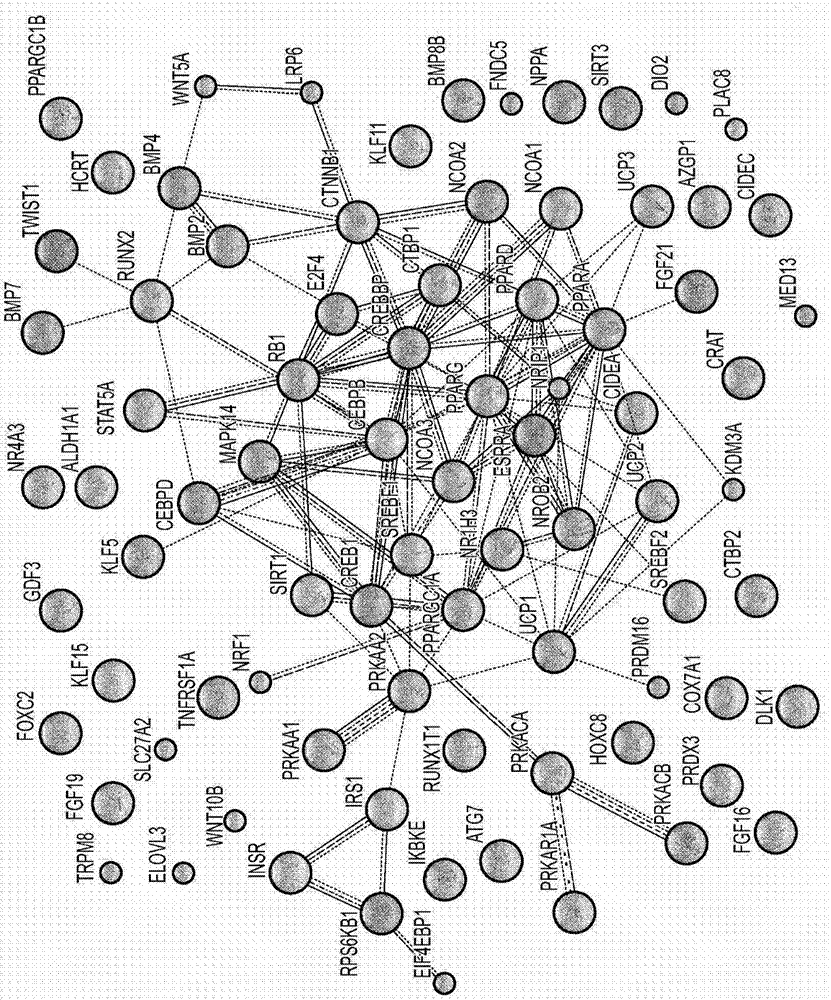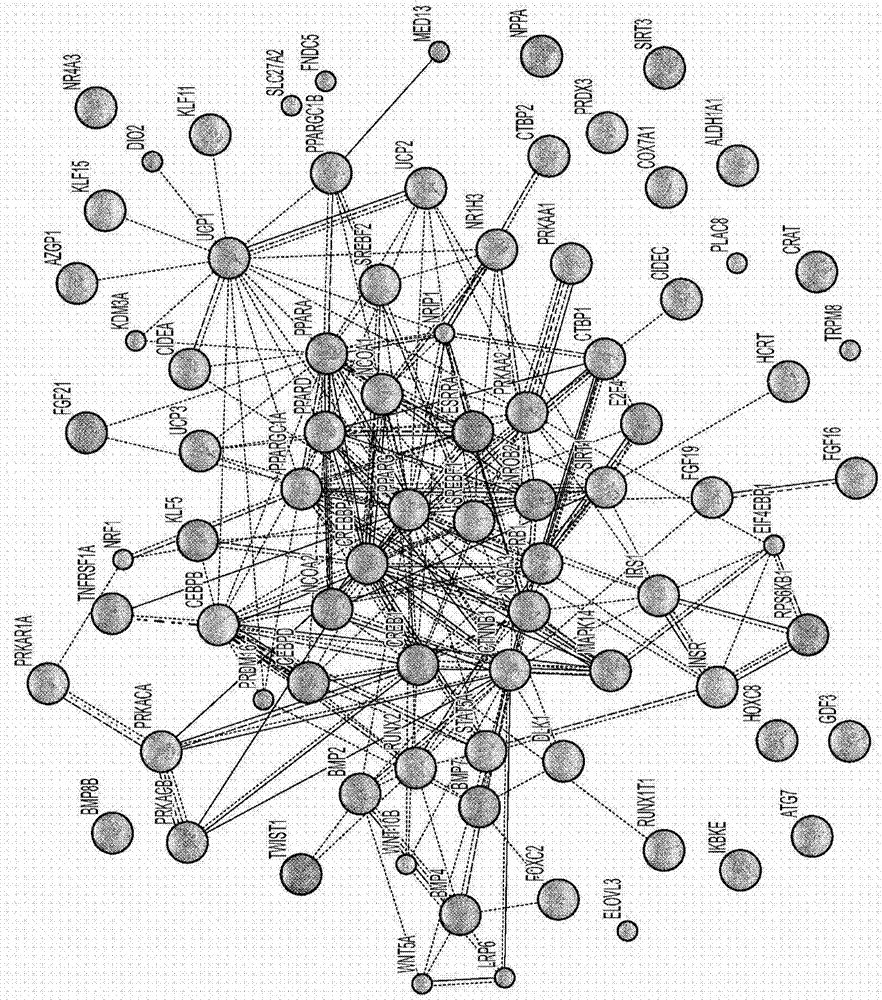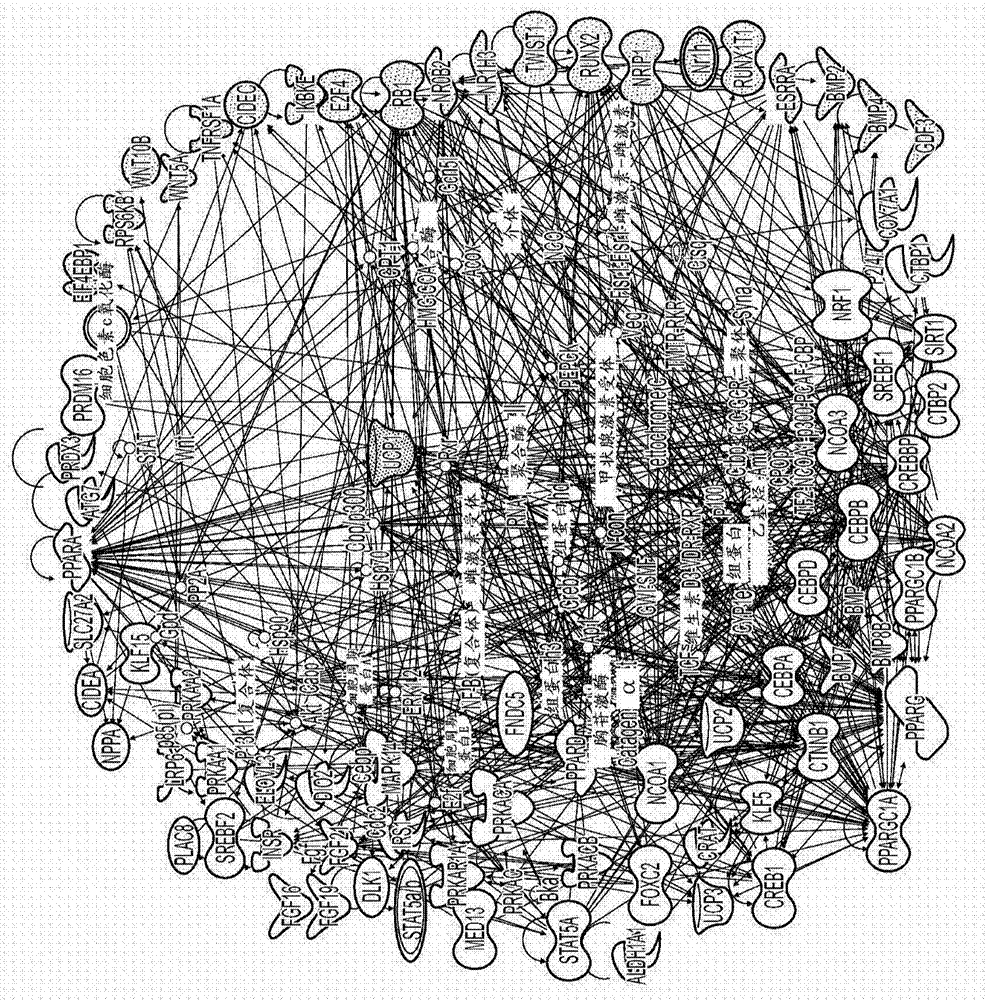miRNA modulators of thermogenesis
A technology of has-mir-22 and hsa-mir-99a, which is applied in the field of thermogenic miRNA regulators, can solve the problems of long-term treatment of obesity, unsatisfactory short-term efficacy and safety performance, and changes in patients' lifestyles.
- Summary
- Abstract
- Description
- Claims
- Application Information
AI Technical Summary
Problems solved by technology
Method used
Image
Examples
Embodiment 1
[0218] Example 1. Computer Analysis of Thermogenic Regulators
[0219] Eighty-three proteins involved in the regulation of thermogenesis were selected based on a critical evaluation and review of available scientific information and our own experimental data. Based on their function, these proteins are classified as thermogenic activators or repressors. These thermoregulatory proteins are described in Table 2.
[0220] Table 2.
[0221] Thermoregulatory proteins:
[0222]
[0223]
[0224]
[0225] These 83 candidate molecules were tested using the known STRING 9.0 database and predicted protein interactions (string-db.org / ). The interactions include direct (physical) and indirect (functional) associations; they arise from four sources: genomic context; high-throughput experiments; co-expression; and prior knowledge. STRING quantitatively integrates interaction data in a large number of organisms from these sources, transferring information between these organisms...
Embodiment 2
[0228] Example 2. In silico selection of relevant miRNA targets
[0229] In order to select thermogenic regulators suitable as targets for miRNA reagents, several Internet-based resources were employed to match miRNAs to their targets ("micronome"). Exemplary tools are described in Table 3.
[0230] table 3.
[0231] Exemplary bioinformatics tools for selecting miRNAs and their targets:
[0232]
[0233]
[0234]
[0235]
[0236]
[0237] Specifically, these tools were used to perform: 1) integrated data mining (8 tools); 2) miRNA mining and mapping (6 tools); 3) miRNA-targeted targets and expression (21 tools); 4 ) integrated miRNA targets and expression (13 tools) 5) prediction and comparison of miRNA secondary structures (5 tools); 6) web search and analysis (8 tools); 7) molecular display (4 tools) ; and 8) information integration and development (1 tool).
[0238] A single gene target can be controlled by several miRNAs, whereas a single miRNA can cont...
Embodiment 3
[0373] Example 3. High content cell phenotype screening
[0374] A high-content screening approach was used to screen for novel miRNA agents that modulate the activity of thermogenic regulators such as UCP1 and UCP2. High-content screening is a drug discovery method that uses live-cell images to aid in molecular discovery. Such automated imaging-based screening methods are particularly useful for identifying agents that alter the phenotype of cells.
[0375] WAT cells contain large lipid droplets, whereas BAT cells, in contrast, contain many smaller droplets and a higher number of mitochondria, which contain iron and give it a brown color. The high number of mitochondria in BAT leads to increased oxygen consumption compared with WAT. Thus, BAT cells can be visually distinguished from WAT cells based on their cellular phenotype.
[0376] Therefore, a high-content screening approach was used to screen for novel miRNAs that modulate the activity of thermogenic regulators. Spe...
PUM
| Property | Measurement | Unit |
|---|---|---|
| diameter | aaaaa | aaaaa |
Abstract
Description
Claims
Application Information
 Login to View More
Login to View More - R&D
- Intellectual Property
- Life Sciences
- Materials
- Tech Scout
- Unparalleled Data Quality
- Higher Quality Content
- 60% Fewer Hallucinations
Browse by: Latest US Patents, China's latest patents, Technical Efficacy Thesaurus, Application Domain, Technology Topic, Popular Technical Reports.
© 2025 PatSnap. All rights reserved.Legal|Privacy policy|Modern Slavery Act Transparency Statement|Sitemap|About US| Contact US: help@patsnap.com



